A world of horror from Arrow and Severin
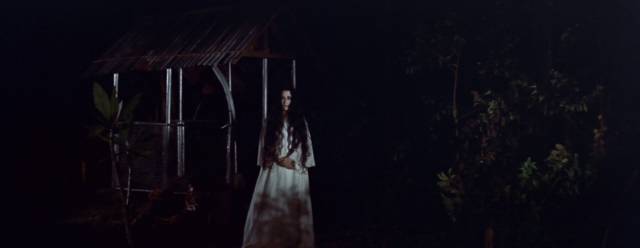
I’m not sure why, but I’ve had a lifelong love of horror, fantasy and science fiction. Perhaps reality has always seemed a bit too mundane for me. The first adult novel I ever read, when I was about eight, was H.G. Wells’ War of the Worlds, followed not long after by John Wyndham’s The Day of the Triffids. I can recall being enthralled around the same age watching King Kong (1933) and Quatermass 2 (1957) on our black-and-white television. Decades later, I still enjoy watching horror movies, though by now they very rarely give me sleepless nights – though I may do my best to turn off my analytical brain, horror is more conceptual for me now than visceral. The idea that something dark and dangerous lurks beneath the surface of quotidian reality is an odd one to embrace – and no doubt a clear indication that I’ve lived a comfortable, sheltered life. I guess I share something with H.P. Lovecraft in this, though hopefully I don’t have his more unsavoury traits.
This past month I had an excellent opportunity to indulge my taste for horror with two substantial box sets – Arrow’s J-Horror Rising, a four-disk collection of seven lesser-known movies from the first wave of international interest in Japanese horror; and volume 2 of Severin’s All the Haunts Be Ours, a thirteen-disk set containing twenty-four features from eighteen countries. Not surprisingly, I was already familiar with some of the movies in both sets, but each also included some excellent new discoveries.
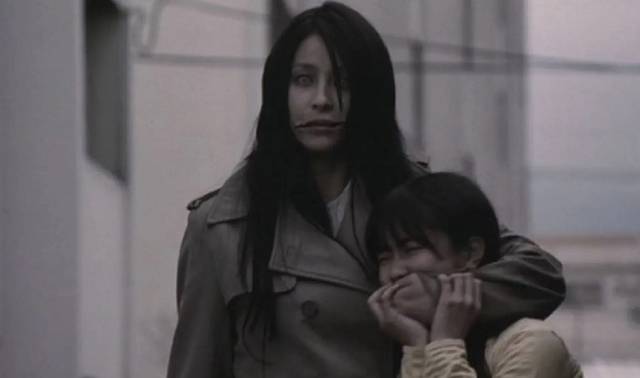
J-Horror Rising (Various, 1999-2005)
I’m sure I’ve mentioned a number of times here that I’m drawn to Japanese fantasy and horror. My knowledge of Japanese culture comes mostly from movies, so I’m sure that a shallow understanding may account for what seem to be mysterious and exotic elements. Where European and North American traditions seek to explain and rationalize the occult, Japanese movies simply accept a reality in which the material and the supernatural are inextricably interwoven. Not only are ghosts real and accepted without question, nature is permeated with non-human spirits, such as the Yokai, which have their own interests quite apart from human beings and their day-to-day life. It’s this sense of layered reality and the absence of a compulsion to explain which appeals to me.
Arrow’s set begins with a movie which was one of my first encounters with modern J-Horror – as opposed to more traditional films like Kaneto Shindo’s Onibaba (1964), Masaki Kobayashi’s Kwaidan (also 1964) and Kenji Mizoguchi’s Ugetsu (1953), which are rooted in a more literary tradition, with their ghosts situated in the past. The wave of horror which gained international attention in the late-’90s and early 2000s firmly brought the supernatural into the contemporary world, bringing an unsettling, more immediately visceral quality to stories of ghosts and monsters which wield an alarmingly physical effect, collapsing any distance between the material and spiritual realms which might have created room for the audience’s sense of safety or comfort.
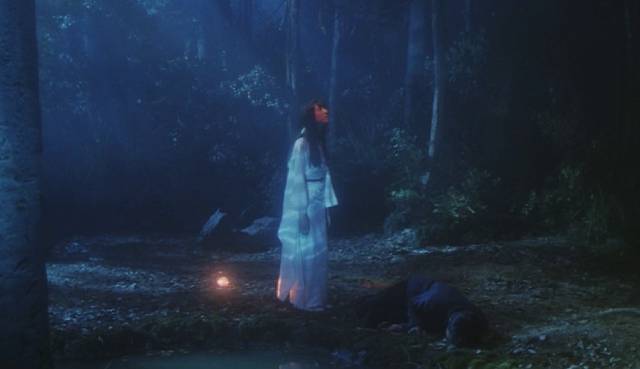
Shikoku (Shunichi Nagasaki, 1999)
In Shunichi Nagasaki’s Shikoku (1999), Hinako (Yui Natsukawa), who was separated from her best friend in childhood when her family moved away, returns to the village to learn that her friend Sayori (Chiaki Kuriyama) drowned years ago. As she reconnects with Fumiya (Michitaka Tsutsui), another childhood friend, strange things begin to happen and the pair find themselves seemingly haunted by the dead girl’s ghost. There’s a tradition on the island of making a pilgrimage to eighty-eight Shinto shrines and the grieving mother has realized that by making the circuit in reverse order it’s possible to open the way between life and death and bring her daughter back. This is definitely not a good idea and the childhood friends must find a way to persuade the ghost to move on. This, and the later Inugami (2001), bridge the gap between traditional folk horror and the more modern form; the approach is more low-key and less aggressively in-your-face than movies such as Hideo Nakata’s Ring (1998) or Takashi Shimizu’s Ju-On (2000).
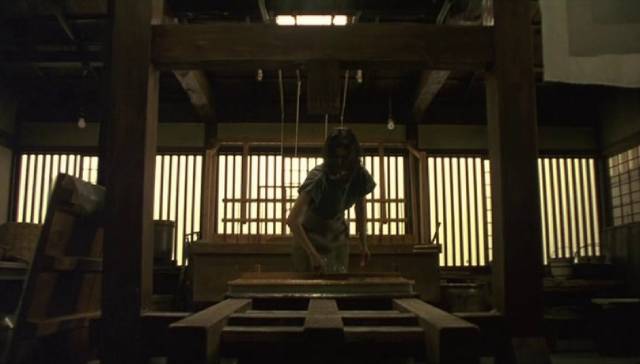
Inugami (Masato Harada, 2001)
Masato Harada’s Inugami (2001) also reflects this more traditional approach in subtle ways – with no menacing long-haired ghosts, a suggestion of supernatural forces only gradually creeps into what begins as a naturalistic drama. A new teacher named Akira (Atsuro Watabe) arrives in a remote village whose inhabitants are steeped in ancient tradition and superstitions. He finds himself drawn to Miki (Yuki Amami), a woman who crafts delicate hand-made paper, an old craft which earns her family money. That family has owned the local woods for centuries and is now preparing to celebrate their nine-hundredth anniversary with rites connected to spirits for which they are guardians.
The teacher is drawn into the Bonomiya family’s inner conflicts – a harsh patriarch, suggestions of madness and violence and incest – and witnesses the villagers’ deeply-rooted hostility. It’s believed that the spirits the family guards are dangerous and, since the teacher’s arrival, have been causing fatal accidents. More mysteriously, after making love to Miki, she seems to grow younger. By the time the film enters its final act with the rites at a mountain shrine, the teacher has learned unsettling things about his own identity and origins and the villagers rise up to destroy the family – past and present, reality and the supernatural crash together in a violent explosion in which those oppressed by the weight of history and tradition attempt to free themselves once and for all.
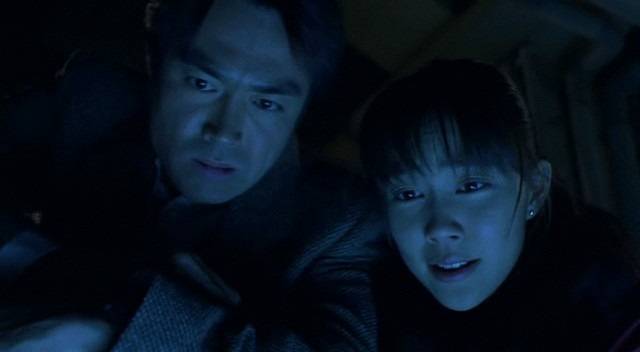
Isola: Multiple Personality Girl (Toshiyuki Mizutani, 2000)
Toshiyuki Mizutani’s Isola: Multiple Personality Girl (2000) dispenses with history and adds a science-fiction slant to its story, which is set in the aftermath of a devastating earthquake in Kobe in 1995. Yukari (Yoshino Kimura), a young woman who possesses psychic powers, arrives in the city to offer aid in the clean-up. Her ability to hear others’ thoughts is problematic – sensing the inner turmoil of a man in a rescue shelter, she attempts to comfort him but instead brings him face-to-face with unbearable guilt, causing him to commit suicide. Later, she meets Chihiro (Yu Kurosawa), a troubled schoolgirl who contains thirteen personalities, the resulting effects on her behaviour causing her to be bullied and ostracized.
While the girl’s psychological problems are partially rooted in familial sexual abuse, there’s something else and Yukari’s investigation leads to a ruined research laboratory and Dr. Manabe (Ken Ishiguro), a scientist who was involved in experiments with his partner using a sensory deprivation tank to induce out of body experiences. The partner, Yayoi (Makiko Watanabe), was in the tank when the earthquake struck and her body died while her spirit was outside – unable to return, she has entered the troubled girl and is determined to take up permanent residence in the younger body.
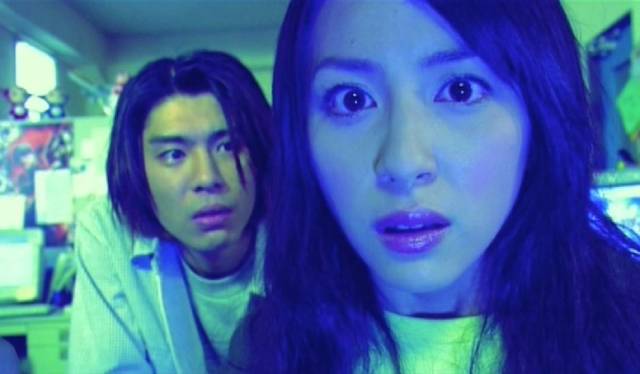
St. John’s Wort (Ten Shimoyama, 2001)
Ten Shimoyama’s St. John’s Wort (2001), which I saw once years ago, still doesn’t do anything for me (I wish Arrow had included Norio Tsuruta’s Kakashi [2001] instead). Based on an interactive game and shot on video, the movie has a deliberately artificial look with manipulated colour and exaggerated camera angles, while the characters are barely sketched in. Nami (Megumi Okina), a video game designer, and her former boyfriend Kohei (Yoichiro Saito), the project head, drive to a big, remote mansion which Nami has just inherited. With video equipment and a communication link back to the team in the office, they plan to explore and map the house as an environment for the game they’re currently working on.
As they go from room to room, picking up items and uncovering clues to Nami’s suppressed past, they’re being stalked by an unseen figure which seems to be determined to kill them. The team back at the office use the surveillance cameras to relay information to the pair to guide them through the danger as they gradually work their way to the hidden heart of the old house and a solution to the mystery which has haunted Nami since childhood. Although there are some interesting and creepy details, it’s about as exciting as watching someone else play a very rudimentary video game.
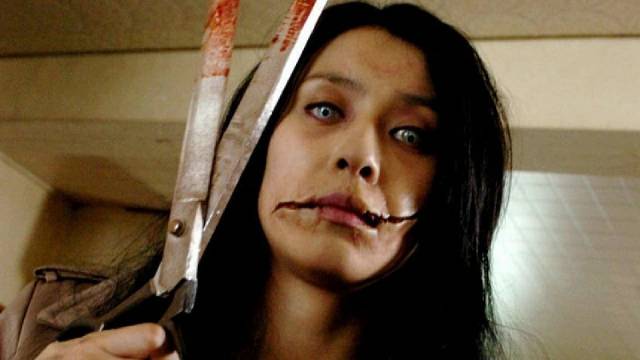
Carved: The Slit-Mouthed Woman (Koji Shiraishi, 2007)
Koji Shiraishi’s Carved: The Slit-Mouthed Woman (2007) is based on an urban legend which dates back to the Edo period when an unfaithful wife was severely disfigured by her husband and returned from the dead as an angry ghost prone to similarly mutilating and killing people. Apparently, in the ’70s rumours arose that she was back and people took to walking their children to and from school to protect them. The image of this ghost with her mouth extended into a wide ugly gash asking people if they think she’s beautiful – and killing them whatever they answer – is undeniably creepy, and the gradually revealed backstory involving brutality to children is disturbing, but there’s a perfunctory quality to the filmmaking which makes it less atmospheric than better-known movies about malevolent ghosts.
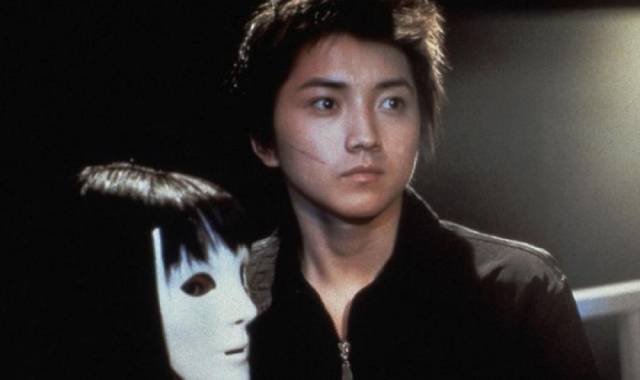
Persona (Takashi Komatsu, 2000)
Takashi Komatsu’s Persona (2000) isn’t entirely successful, but it tackles some interesting themes and uses a striking visual metaphor to explore school-age angst and capitalist exploitation of kids’ insecurities. When a bullied student named Danda returns to school wearing an inscrutable porcelain mask, his new anonymity gives him the confidence to confront his oppressors. Soon others begin wearing masks and the underdogs become aggressive themselves. News reports cause the phenomenon to spread and it’s picked up by a popular fashion model named Hiromi (Ayumi Shigemori) and her designer Daimon (Akaji Maro). With this anonymity come increasing waves of antisocial behaviour and violence and a couple of students and a reporter investigate, eventually finding the mask maker Dojima (Tatsuya Fujiwara) and learning his reasons for creating them. There’s a touch of giallo in the mystery of the murders and their motive, though the narrative never quite lives up to the enigmatic imagery. The presence of Fujiwara and Chiaki Kuriyama as his sister Reika adds a certain frisson as they went from this straight to Kinji Fukasaku’s Battle Royale (2000).
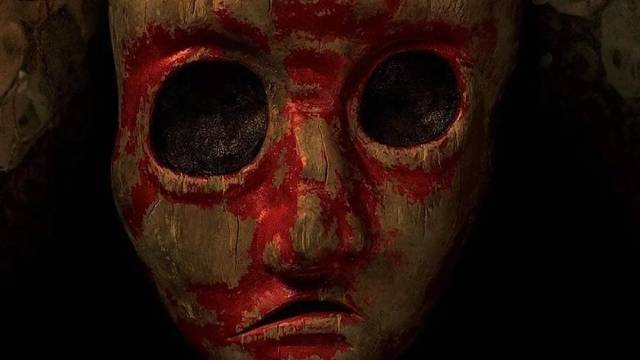
Noroi: The Curse (Koji Shiraishi, 2005)
Noroi: The Curse (2005) was the big surprise, and greatest pleasure, of the set. Directed by Koji Shiraishi, this found-footage horror is much more original and idiosyncratic than Carved, doing an excellent job of mixing the absurdities of Japanese television with unsettling folk horror motifs rooted in a pre-technological past. Television producer-presenter Kobayashi (Jin Muraki) disappears after his house has burned down, leaving the charred remains of his wife. But there’s plenty of material from which to reconstruct what happened, with clips from his on-air occult presentations and raw tapes of an investigation which goes from hyped-up, somewhat tongue-in-cheek exposés of ghosts and psychics to increasingly disturbing occurrences of madness and murder leading eventually to a town which was submerged after a dam was built in the ’70s. Back then, a priest performed a ritual to expel a demonic spirit only to have it possess his daughter – all the strange incidents Kobayashi has reported on turn out to revolve around the possessed woman she grew up to be, spreading madness and violence. Shiraishi puts all the pieces together in a way which creates a genuine sense of authentic horror – even the absurd TV clips with incongruously perky presenters add to a convincing evocation of an ancient evil impinging on the cynical, well-lit present.
All the films are given excellent presentations, with commentaries and plentiful new and archival interviews and featurettes, most substantially on the Noroi disk, which also includes some fake television documentaries about the “real” demonic curse at the centre of that film.
*

All the Haunts Be Ours Volume 2 (Various, 1952-2024)
One of the year-end highlights was Severin’s release of the second volume of their mammoth project to catalogue folk horror from around the world. As with volume one, also curated by the invaluable Kier-La Janisse, the new collection is eclectic, with a mix of the familiar and the obscure. And once again, it would be easy to quibble over definitions as “folk horror” is a category without clear parameters. Is it coherent to put the allegory of Jamil Dehlavi’s Born of Fire (1987) in the same box as Don Sharp’s pulp horror Psychomania (1973)? And does it really matter when the sheer variety of films in the set is its source of pleasure?
As with the first set, there are a number of films previously available on DVD and/or Blu-ray – these include Born of Fire (Indicator), Psychomania (available on BFI Flipside and Arrow), Erik Blomberg’s The White Reindeer (on Masters of Cinema), John Llewellyn Moxey’s The City of the Dead (VCI and Arrow) and, on less prominent disks, Juraj Herz’s Beauty and the Beast, Marcin Wrona’s Demon, Christiane Cegavske’s Blood Tea and Red String – though inclusion here adds additional context which enhances the experience of re-watching them.
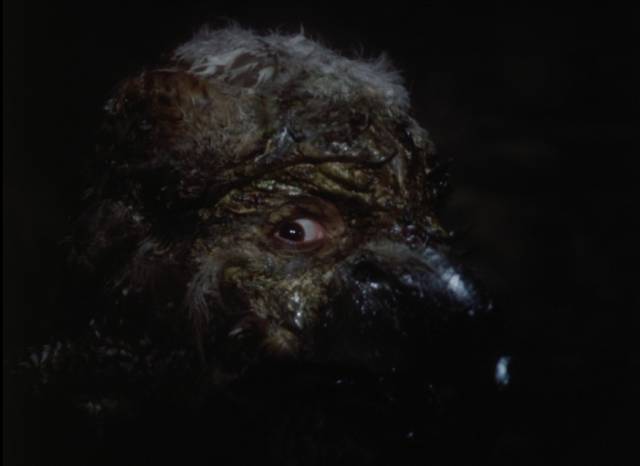
With twenty-four films (and two-dozen additional shorts), commentaries, interviews, documentaries and other ephemera, there’s too much here for me to go into detail, but I will mention some highlights. One thing I was looking forward to was seeing Herz’s Beauty and the Beast (1978) again, and it remains my favourite rendition of the familiar story with darkly authentic medieval design, though disappointingly it’s been mastered from a less-than-pristine source, with notable print damage. Herz’s The Ninth Heart (1979) looks much better, though the film isn’t as visually rich; in this fairy tale an evil magician curses a princess and as young heroes come looking for a cure, he steals their hearts to rejuvenate himself.
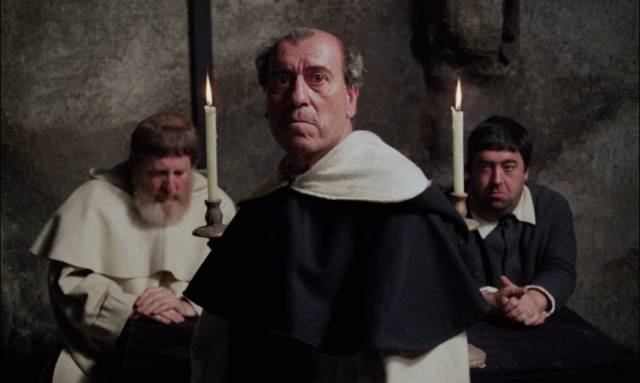
Akelarre (1984) continues Basque filmmaker Pedro Olea’s exploration of historical horror, previously seen in Vinegar Syndrome’s release of El bosque del lobo (1970); here he depicts a brutal 17th Century incident of witch-hunting, which gives a more serious historical gloss to events treated more sensationally in Michael Reeves’ The Witchfinder General (1968) and Michael Armstrong’s Mark of the Devil (1970). Once again we see the clash between perverse representatives of the church and adherents to older, pre-Christian beliefs, with the establishment wielding brutality and hypocrisy in equal measure.
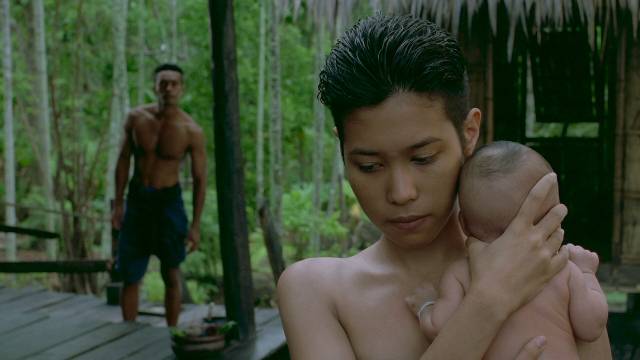
Three Asian films feature vengeful female ghosts. In Yoshihiro Ishikawa’s Bakeneko: A Vengeful Spirit (1968), a woman emerges as a cat spirit from the pond where she drowned in order to get revenge on the brutal local warlord who is prone to kill husbands in order to rape their wives. In the Thai Nang Nak (1999), Nonzee Nimibutr recounts a folk legend about a man who leaves his wife to go to war; while he’s away she dies in childbirth, but when he returns he finds her and the baby in their house. People tell him she’s dead but he refuses to believe them and the ghost begins to wreak havoc in the village. In Sisworo Gautama Putra’s Sundelbolong (1981), Indonesian star Suzzanna has only just gotten married when her husband is called away on a long sea voyage. Her past immediately catches up with her in the form a madame for whom she used to work as a prostitute; kidnapped and brutally raped, she dies, but when her husband returns he encounters her double, seemingly a spirit which enacts revenge on her tormentors. This last is accompanied by Suzzanna: The Queen of Black Magic (2024), a feature-length documentary by David Gregory about Suzzanna’s life and cinematic legacy, which provides interesting glimpses of the Indonesian tradition of fantasy and horror, but also (and increasingly sadly) what life was like for a prominent woman in the country’s film industry and the culture at large.
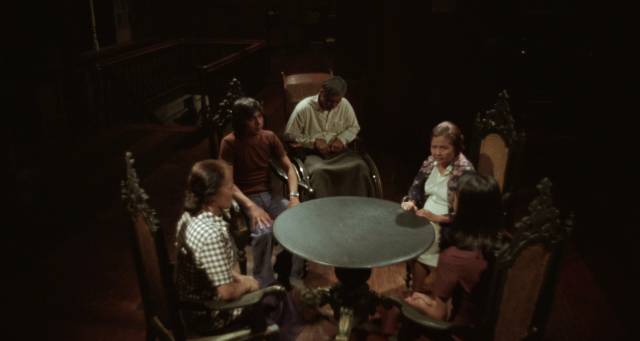
The ghost in Filipino director Mike De Leon’s The Rites of May (Itim, 1976) isn’t looking for revenge so much as to reveal the truth behind her death. Steeped in Catholic imagery, the film is set during Holy Week celebrations in the town where photographer Jun (Tommy Abuel) grew up and to which he has returned on assignment and to visit his ailing, elderly father. His attention is drawn to an elusive young woman named Teresa (Charo Santos-Concio) who seems to be haunted by her dead sister Rosa (Susan Valdez-LeGoff). As Jun and Teresa delve into Rosa’s death, his father becomes implicated, upending Jun’s sense of his own family history.
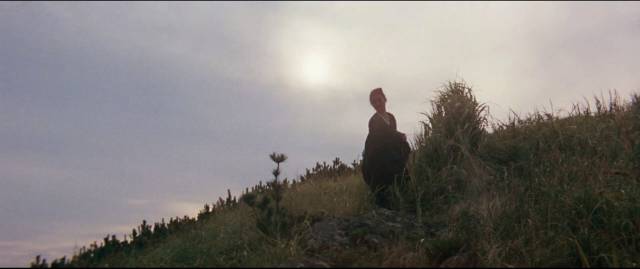
The Korean Io Island (1977), directed by Kim Ki-Young, whose The Housemaid (1960) was included in the first World Cinema Project set from Criterion, centres on a clash between modern Capitalism and ancient myth. Corporate executive Sun (Kim Jeong-cheol) has plans to develop a remote island populated only by women whose male family members have died at sea. Shifting back and forth through time, the film explores the island’s mystical status as a place on the borderline between life and death, where demons come to take away men who have to work on the sea.
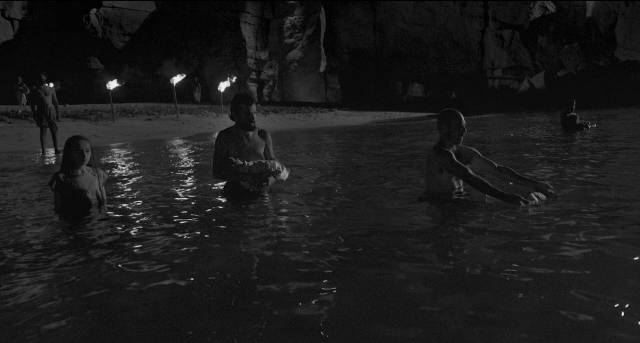
The perils of a life dependent on the sea also figure in Scales (2019), the first feature of Saudi filmmaker Shahad Ameen. In a small fishing community, first-born daughters are ritually sacrificed to hostile entities who otherwise prey on the fishermen. But Muthana (Yagoub Alfarhan) relents at the last moment and pulls his baby daughter from the water. Twelve years later Hayat (Basima Hajjar) is an outcast, shunned by the villagers and marked by her experience with scales on her feet. Now her mother is pregnant again and Muthana hopes for a girl so he can restore his honour with a new sacrifice. It seems that the babies cast into the sea actually transform into dangerous mermaids, with Hayat only partially transitioning, suggesting a complicated symbiotic relationship between the community and the sea they depend on. Shot in expressive monochrome, the film has a haunting quality greatly enhanced by Hajjar’s impressive performance.
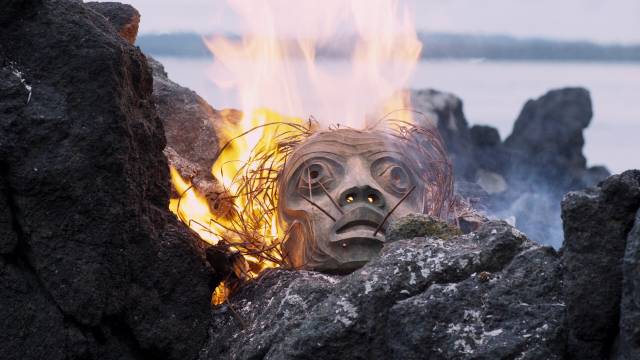
The sea and its menacing power is also key to Gwaai Edenshaw and Helen Haig-Brown’s Edge of the Knife (2018), the first feature shot in the almost-extinct Haida language. Set in some unspecified past among the islands off British Columbia’s coast, it tells the story of Adiits’ii (Tyler York), an irresponsible man who inadvertently causes the death of his friend’s son when he takes him out fishing in bad weather. Maddened by guilt, he flees into the woods where he becomes a kind of wild beast akin to the Wendigo. His guilt and his friend’s anger have to be resolved by a communal effort to restore the balance his actions have upset. Created through a process of communal collaboration, the film joins the small number of movies which give expression to indigenous culture from within – not surprisingly, one of the executive producers is Zacharias Kunuk, whose Atanarjuat: The Fast Runner (2001) is a landmark of this movement.
There’s also an ethnographic aspect to Erik Blomberg’s The White Reindeer (1952), again set in some unspecified past, here in Lapland where the population lives in harsh conditions tending herds of reindeer. A woman unhappy with being left for long stretches by her husband makes a compact with a shaman which essentially transforms her into a shape-shifter, an alluring reindeer with vampiric tendencies.
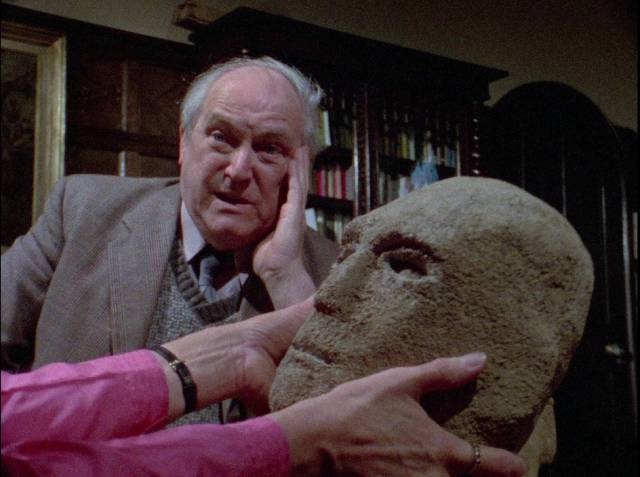
From the Old Earth (1981) was also filmed in a language generally not heard in movies, in this case Welsh. Wil Aaron’s short feature (only 46 minutes) is a very traditional slice of British horror – it could easily have been aired as one of the BBC’s Ghost Stories for Christmas. After a prologue in which Druids perform a human sacrifice in a stone circle, the story proper begins at an archaeological dig where an expert on the ancient Celts isn’t finding much in the way of artifacts. But nearby, a man digging in his garden comes across a stone head. Thinking it might be valuable, he cleans it up and brings it into the house; that night, his wife is terrified by a strange apparition. Next day, he takes it to the university and the professor explains that these ancient carvings are quite common. She in turn takes it home and that night is menaced by a horned figure. She insists that her husband return the head to the gardener, but the horned figure manifests in his car, causing a fatal crash. This is in line with a familiar tradition running at least from the stories of M.R. James up through Piers Haggard’s The Blood on Satan’s Claw (1971) to Clive Barker’s 1984 story Rawhead Rex (filmed by George Pavlou in 1986). Aaron takes his time, building atmosphere from a very simple concept without a lot of incident. Although the folk horror context makes sense of highlighting this film, the disk includes a second movie by Aaron which is longer: Blood on the Stars (1975), also in Welsh, is a tongue-in-cheek slasher in which members of a village choir bump off a collection of celebrities scheduled to appear at their concert because they’d steal all the attention from the kids.
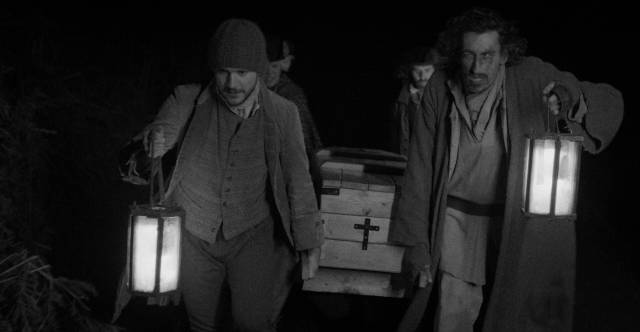
Sean Hogan’s To Fire You Come at Last (2023) was co-produced by Severin, building on the Ghost Story for Christmas tradition. Drawing on the idea of “corpse roads”, routes along which bodies were carried on the way to burial which inevitably accrued legends of hauntings, it follows a Squire and his servants carrying his recently dead son across a bleak stretch of moorland. Their journey continues into the night as escalating conflicts segue into menacing apparitions. Dark secrets are revealed about the parts the men – including the Squire – played in the son’s untimely death. Hogan uses excellent black-and-white photography (by Paul Goodwin and Jim Hinson) to evoke the 17th Century setting, reinforced with good performances from the small cast – the film would pair nicely with Ben Wheatley’s A Field in England (2013), which was included in the first set.
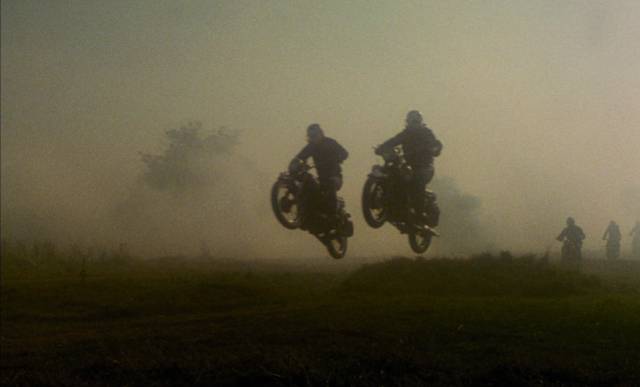
Don Sharp’s Psychomania (1973) makes no pretense to this kind of seriousness – pure pulp horror, its chief claim to a place in the set is the use of a stone circle as one of its main settings. Tom (Nicky Henson), leader of a bike gang, learns the secret of immortality from his witch mother (Beryl Reid) and her sinister servant (George Sanders); all you have to do is kill yourself while being absolutely certain that you’ll come back. It works for him, so he persuades the rest of the gang to join him – most succeed, but at least one doesn’t quite believe and remains dead. All they do with their new-found power is terrorize people on the roads and in the nearest town, their youthful lack of imagination essentially wasting the opportunity. There’s a revelation that mother made a pact with the Devil when Tom was born, but the gang’s nihilism ultimately leads to nothing.
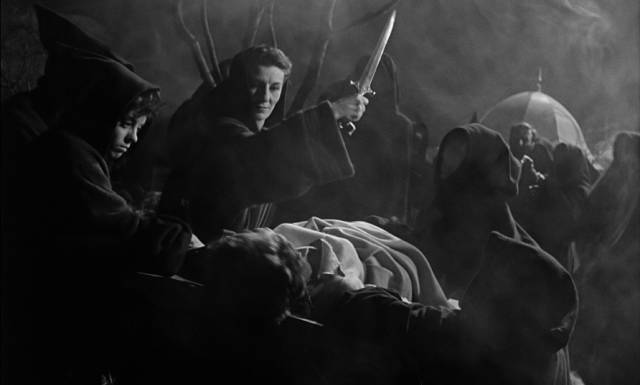
Along with Psychomania, John Llewellyn Moxey’s The City of the Dead (1960) is the most mainstream movie in the set. Small, atmospheric and shot on soundstages in England although set in New England, the film has interesting parallels with two other movies from 1960 – Mario Bava’s Black Sunday and Alfred Hitchcock’s Psycho. Like the former, it begins with the execution of a witch who curses her executioners, then jumps ahead a couple of hundred years as she wreaks revenge on the descendants of her tormentors, while it shares with the latter the once-shocking narrative twist of having the main character killed before the halfway mark, followed by others investigating her disappearance. With a tight script by George Baxt (from a story by producer Milton Subotsky, marking this as the ur-text for Amicus Productions) and efficient direction by Moxey and wonderful photography by Desmond Dickinson, the only shaky aspect is some uneven performances – Christopher Lee’s pseudo-American accent is a bit distracting, and Dennis Lotis and Tom Naylor as the two male leads are both annoying jerks – though Valentine Dyall and, particularly, Patricia Jessel as the leaders of the coven are both excellent and Venetia Stevenson and Betta St. John are appealing as the two female leads.
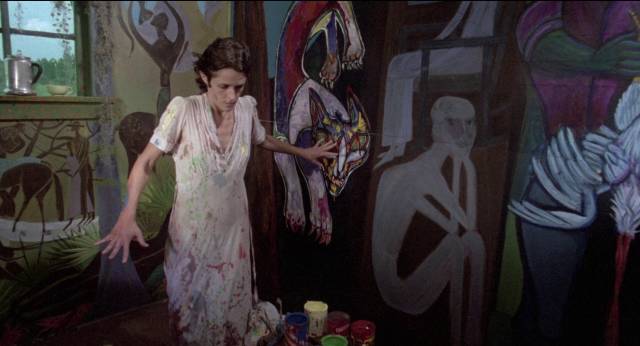
As in Moxey’s film, a strong sense of regions steeped in superstition and folklore is present in a pair of minor American movies. Carter Lord’s The Enchanted (1984) is an odd, imaginative low-budget fantasy shot in rural Florida. Coming home after years at sea, Royce (Will Sennett) sets about restoring the old family home, planning to farm. Booker T (Julius Harris), an old family friend, warns him to avoid a family of squatters nearby, but Royce hires them to help with the work. There’s a touch of the lingering ’60s counterculture about the Perdry family – hard-working vegetarian hippies – and Royce falls for elder daughter Twyla (Casey Blanton), who paints elaborate murals of nature teeming with life. But there’s something strange about them, which is ultimately explained by a legend about the area standing on the border between this world and another; the Perdrys turn out to be a family of birds who have taken on human form with the aim of Twyla mating with a man. More folk tale than horror, the movie is languidly paced, taking its time to build its mood and lingering on images of the natural world.
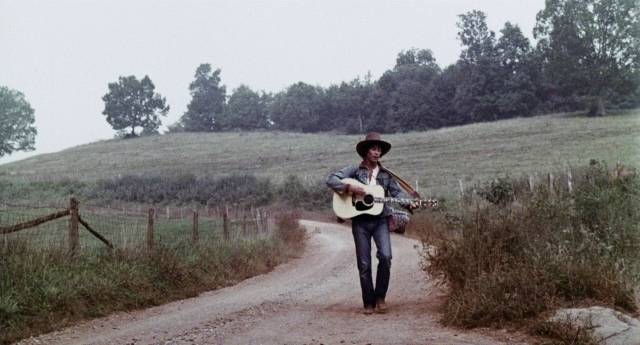
Who Fears the Devil (1972) is an awkward, episodic slice of cornpone based on Manley Wade Wellman’s stories about John the Balladeer, a wandering musician who encounters various supernatural events as he travels around the backwoods of Appalachia. The last of only four features directed by prolific television director John Newland – known for directing all but one episode of the anthology horror series One Step Beyond (1959-61), along with episodes of Thriller (1961-62), Alfred Hitchcock Presents (1962), Star Trek (1967) and literally dozens of other series, though perhaps best-remembered now for the fan-favourite made-for-TV movie Don’t Be Afraid of the Dark (1973) – Who Fears the Devil is a rather shapeless compendium of regional stories in which the occult impinges on folks’ lives – including, perhaps inevitably, a musical duel with the Devil, encounters with religious hucksters and, most unexpectedly, a giant stop-motion bird. Things get really odd when John seems to slip into the past and finds himself on a plantation where a brutal overseer abuses slaves until John puts him in his place. Although John is played by the rather bland singer Hedges Capers in his only movie appearance, the cast is filled with familiar faces: on his journeys John encounters Denver Pyle, Alfred Ryder, Harris Yulin, R.G. Armstrong, Severn Darden, Val Avery, Percy Rodrigues and Susan Strasberg.
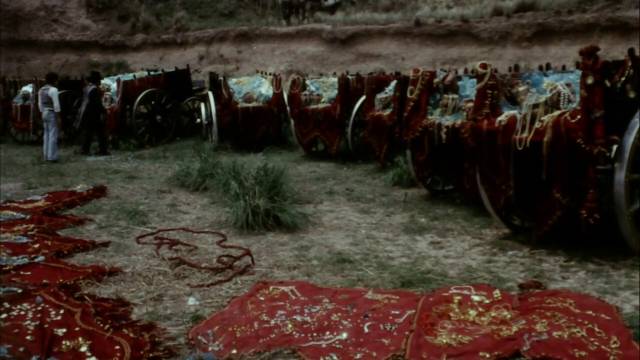
Remote rural superstitions and the literal Devil also figure in Leonardo Favio’s Nazareno Cruz and the Wolf (1975), one of the most successful and critically acclaimed movies made in Argentina. Personally, I found the style a bit grating, but the story is engaging. When her husband and six sons are away, a woman is warned by a local witch to beware the birth of a seventh son because local legend says the seventh boy will be a werewolf. Because her husband and sons all die on their trip, she has no intention of giving up the new child. Named Nazareno Cruz (Juan Jose Camero) the boy grows up to be a cheerful and popular young man, with no indication of any curse. But then he falls in love with Griselda (Marina Magali) and the Devil appears to make him an offer: he can have untold wealth and power if only he will give up his love. When he refuses, Nazareno finds himself turning into a wolf and preying on local livestock and, eventually as he is hunted, killing his neighbours.
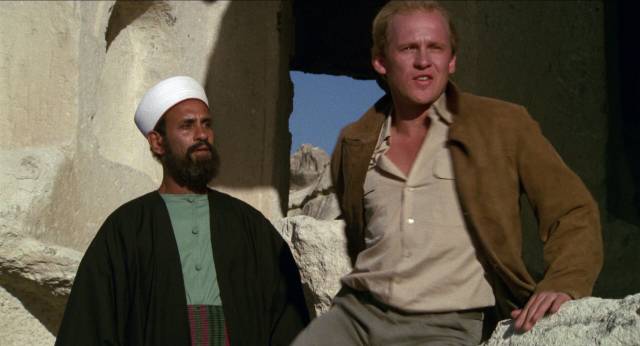
Jalil Dehlavi’s Born of Fire (1987) is more allegory than horror, somewhat reminiscent of the films of Alejandro Jodorowsky; it bridges West (Europe) and East (Turkey), art and science, science and religion, using striking imagery and symbolic rather than realistic characters. Musician Paul Bergson (Peter Firth) is having nightmares, perhaps related to the mysterious death of his father before he was born. He’s approached by an astronomer (Suzan Crowley) who somehow connects him with disturbances in the sun which seem to be threatening the planet. Together, they travel to Turkey in search of a mythical figure called the Master Musician (Orla Pederson), whose music is causing those disturbances and ushering in the end of the world – and who may hold the secret of Paul’s father’s death. The narrative remains murky, its mysticism drawn from Islamic mythology, but it’s all conveyed through striking cinematography by Bruce McGowan.
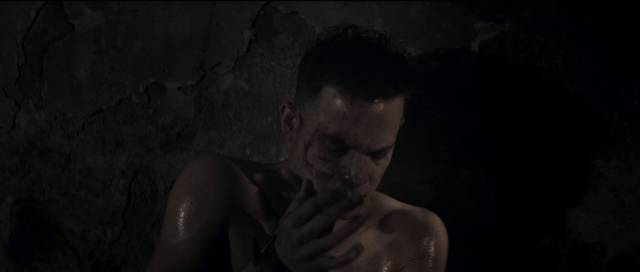
I appreciated Marcin Wrona’s Demon (2015) more on a second viewing (I watched it on DVD a year or two ago). Intense and unsettling, its narrative draws on deep undercurrents which are no doubt easier for a Polish viewer to decipher. Piotr (Itay Tiran), who’s been living for a long time in England, returns to Poland to marry his friend’s sister Zaneta (Agnieska Zulawska), whom he mostly knows from on-line interactions. Her father (Andrzej Grabowski) isn’t too pleased, viewing Piotr as not fully Polish and tainted by his years abroad. On the afternoon of the wedding, Piotr inadvertently uncovers a skeleton on the grounds of the old family estate, a disturbing remnant which vanishes when he tries to show it to others. As the evening progresses and copious quantities of alcohol are consumed, Piotr keeps seeing a mysterious woman dressed in old-fashioned clothes and then collapses to the floor in a fit. The celebration becomes chaotic as his new father-in-law tries to hide what he believes is some severe form of illness. But the affliction is actually a dybbuk, a spirit which has taken possession of Piotr. Hana (Maria Debska) was a Jewish woman who disappeared many years ago and now her spirit is reasserting itself, a fragment of dark history which refuses to remain buried – it’s not entirely clear (to me) whether she died in the Holocaust or was actually killed by Zaneta’s grandfather, the latter seeming likely as she was buried on the family’s property. What is clear is that she embodies the history of anti-Semitic violence which many Poles wish would stay buried.
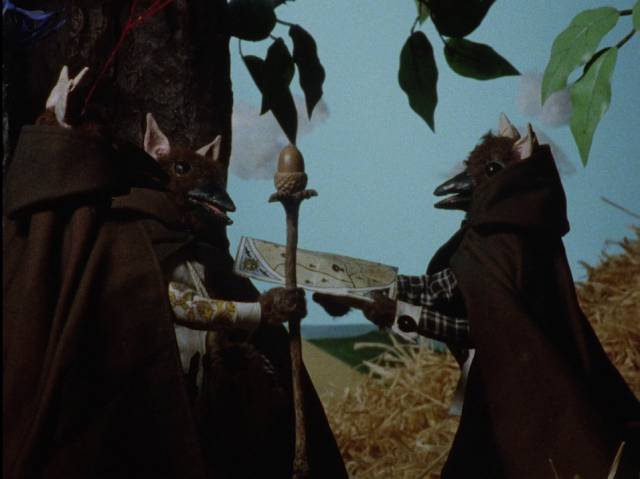
Perhaps the film which stretches the boundaries of “folk horror” the farthest is Christiane Cegavske’s Blood Tea and Red String (2006), a stop-motion feature made single-handedly over thirteen years and loaded with striking imagery which seems redolent of the artist’s personal obsessions – obsessions not always clear to the viewer. With no dialogue, we’re left to interpret everything as best we can. There’s some kind of class conflict between elegantly-dressed white mice and a community of odd rodent-like creatures with beaks. The latter create a human-shaped effigy into which they sew an egg before crucifying it in a tree. The mice steal the effigy and the beaked-ones set out to retrieve it, encountering other creatures along the way. There are echoes of Jan Svankmajer and the Brothers Quay, but the mixture of sunny surfaces and sinister undertones is distinctly the filmmaker’s own.
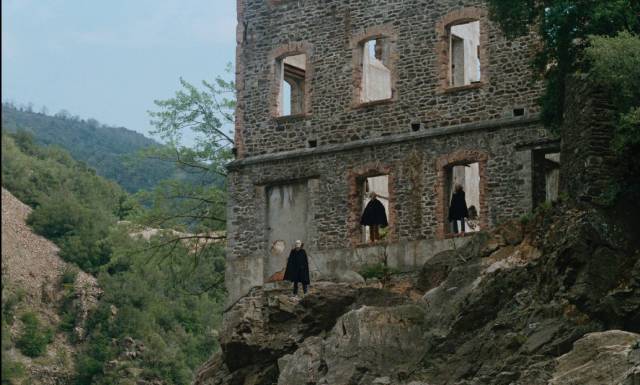
Like Cegavske’s film, the final two features in the set create vivid alternate realities around obscure, rather hermetic mythologies which don’t seem to refer to anything outside themselves. In Jean-Pierre Mocky’s Litan (1982), geologist Jock (Mockey) is studying the rocks around the small town of Litan, in which a festival celebrating the dead is underway. His partner Nora (Marie-José Nat) has dreams in which Jock is dead and, waking, goes in search of him. The town is full of people in masks and the celebrations keep tipping over into violence, with Jock and Nora trying to escape the town as hostile locals, including the police, try to stop – and perhaps kill – them. Mocky says in an extra that he wanted to create a fantasy which went against the grain of French cinema (and like Jean Rollin before him he draws on the surrealists and imbues the work with a carnivalesque atmosphere which combines the playful with the menacing). I can’t believe this is the first film by Mocky I’ve come across. An actor who began appearing in films in the ’40s, with roles in movies I have seen – Jean Cocteau’s Orphée (1950), Michelangelo Antonioni’s I Vinti (1953) and Luchino Visconti’s Senso (1954) – he began writing and directing at the beginning of the New Wave, largely to create roles for himself which weren’t available in other movies. He appeared in almost a hundred movies and television shows from the mid-’40s up until his death in 2019, and directed seven-dozen films and numerous TV episodes. Like Rollin, here he displays a fine eye for unusual locations (the Medieval town of Annonay), giving Litan a distinctive atmosphere.
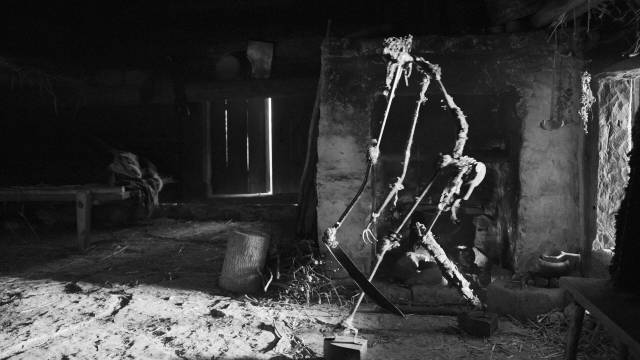
And finally, Rainer Sarnet’s November (2017) has some of the most striking imagery in the entire set. Based on a novel by Estonian writer Andrus Kivirähk and shot in evocative black-and-white, the film is set in a poor rural area of 19th Century Estonia where the people eke out a living by farming. To help them, they build machines out of scraps of wood and metal into which they draw the souls of the dead, who become slaves called Kratts. The film opens with one such device crossing a field and stealing a cow from a neighbour’s barn. The strangeness of the world evoked by the film, the obsessive quality of this remote society and the mystery of its spiritual underpinnings reminded me a little of Aleksei German’s Hard to Be a God (2013); the hard existence of these peasants results in conflict, madness and violence, but the precision and beauty of the imagery and the stop-motion Kratts produce a strange tension between the bleakness of what’s being depicted and the artistry with which it’s been created.
As with Severin’s first set, this volume is a substantial contribution to our understanding of fantasy and horror as it’s expressed in multiple cultural contexts. Although sources vary, the overall quality of the presentations is excellent and, as before, commentaries, featurettes and additional short films add context. Hopefully, there’s plenty more out there to fill additional volumes. As an extra bonus, volume two comes with a 252-page hardcover collection of a dozen newly commissioned short stories.
Comments